28.07.2017
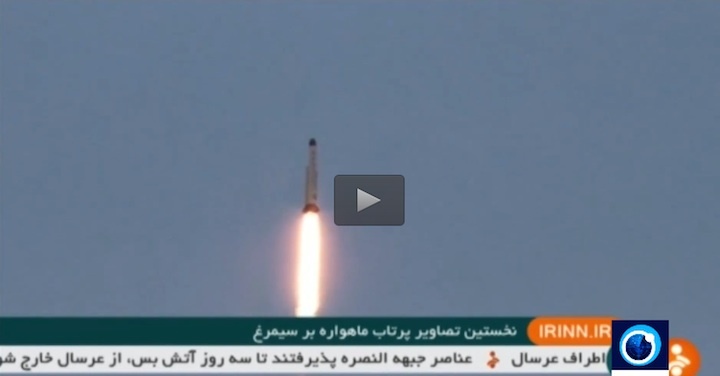
Iran has successfully launched its domestically-manufactured Simorgh carrier, whose mission is to put Iranian satellites into the orbit.
According to Tasnim news agency, the launch was carried out by Imam Khomeini Space Center.
The report added that Simorgh satellite carrier is able to put satellites weighing as much as 250 kilograms at an orbit about 500 kilometers above the Earth’s surface.
The report said Imam Khomeini Space Center is responsible for all operations related to satellite carriers, including preparation, launch, control and steering.
Iran's Imam Khomeini Space Center conforms to the latest international standards and after final phase of its development, the base will be able to meet all the country’s needs at Low Earth Orbit (LEO).
The launch signals official inauguration of Imam Khomeini Space Center.

In December last year, Iran’s minister of information and communications technology said the country was planning to send a new domestically-manufactured satellite into space by the past Iranian calendar year (ending on March 20, 2017).
Mahmoud Vaezi added that Iran planned to send two more satellites into space by the end of the next Iranian calendar year (which ends on March 20, 2018).
The three satellites have been manufactured by young Iranian experts in research centers at the country’s universities, the minister said.
He also noted that Iran was about to sign a contract with a Russian company on the manufacture of a remote-sensing satellite.
Vaezi’s remarks came after head of the Iranian Space Agency (ISA) Mohsen Bahrami said in October 2016 that the country was planning to send three home-made satellites into space.
Speaking to reporters on the occasion of World Space Week, Bahrami said Sharif Sat would be put into orbit by the end of the last Iranian calendar year (March 20, 2017).
He added that Amirkabir and Nahid I satellites would be put into space during the next Iranian calendar year, noting that the preparation process for domestically-manufactured Sadr satellite was also underway.
The ISA chief stated that Sharif Sat was a remote-sensing satellite and Nahid I was a communications satellites.

Iran launched its first locally-built satellite, Omid (Hope), in 2009. The country also sent its first bio-capsule containing living creatures into space in February 2010, using Kavoshgar-3 (Explorer-3) carrier.
Iran also placed the domestically-made Fajr (Dawn) satellite into orbit in February 2015. The satellite is capable of taking and transmitting high-quality and accurate pictures to stations on earth.
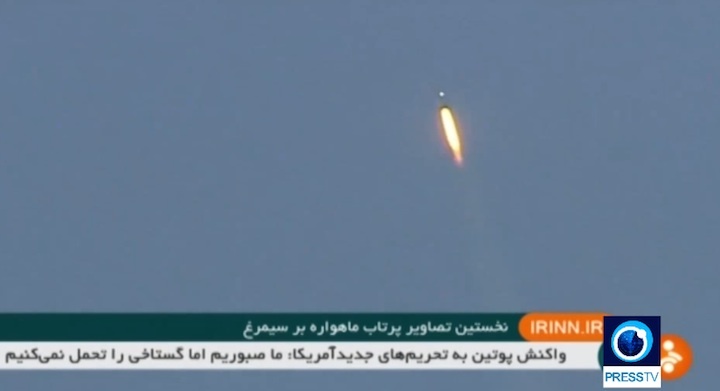
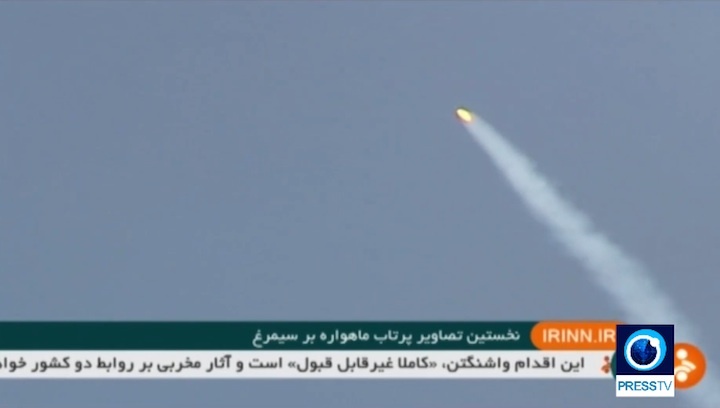
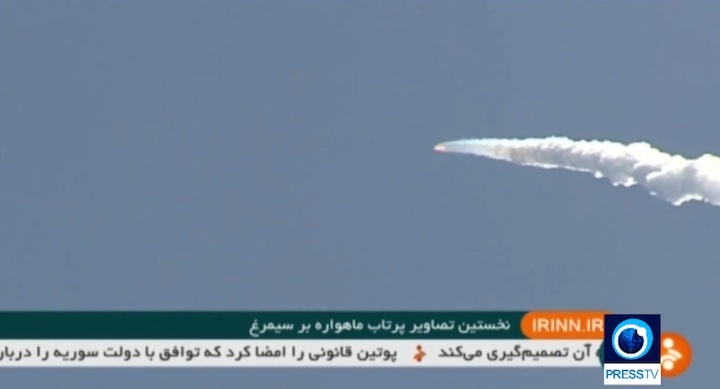
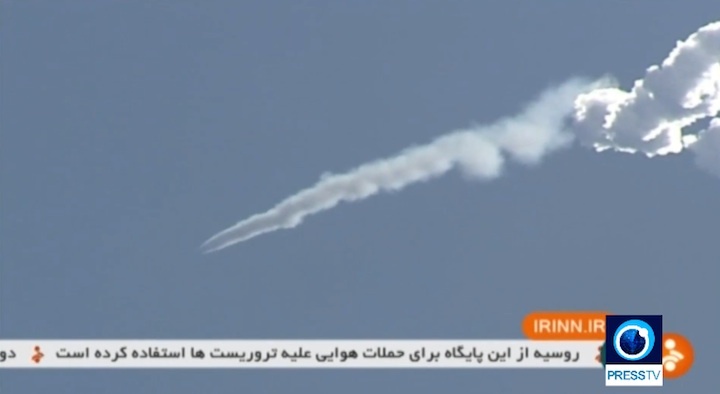
Quelle: PressTV
+++
U.S. says Iran rocket test breaches U.N. resolution
DUBAI/WASHINGTON - Iran successfully tested a rocket that can deliver satellites into orbit, state television reported on Thursday, an action the United States said breaches a U.N. Security Council resolution because of its potential use in ballistic missile development.
Iranian state television showed footage of the firing of the rocket, mounted on a launchpad carrying pictures of Ayatollah Ruhollah Khomeini, founder of the Islamic Republic, and Supreme leader Ayatollah Ali Khamenei.
The rocket launch violated United Nations Security Council Resolution 2231, State Department spokeswoman Heather Nauert said on Thursday.
That resolution, which endorsed a 2015 nuclear deal between Iran and world powers, calls upon Iran not to undertake activities related to ballistic missiles capable of delivering nuclear weapons, including launches using such technology. It stops short of explicitly barring such activity.
"We would consider that a violation of UNSCR 2231," Nauert said at a briefing with reporters when asked about the launch. "We consider that to be continued ballistic missile development. ... We believe that what happened overnight, in the early morning hours here in Washington, is inconsistent with the Security Council resolutions."
Tehran denies it has missiles designed to carry nuclear warheads.
"The Imam Khomeini Space Centre was officially opened with the successful test of the Simorgh (Phoenix) space launch vehicle," state television said. "The Simorgh can place a satellite weighing up to 250 kg (550 pounds) in an orbit of 500 km (311 miles)."
"The Imam Khomeini Space Centre ... is a large complex that includes all stages of the preparation, launch, control and guidance of satellites," state television added.
Quelle: Reuters
---
Update: 1.08.2017
.
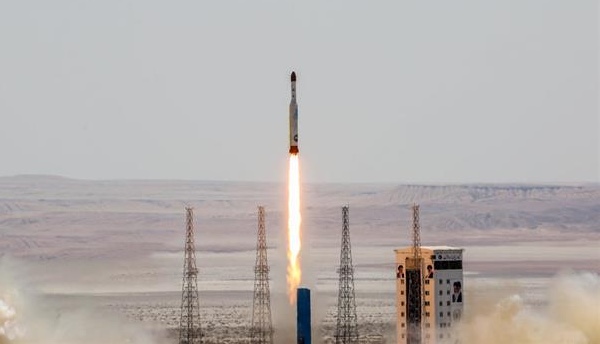
The July 27 launch of an Iranian Simorgh rocket, which the government said was a test of a satellite launch vehicle but which the US considered a ballistic missile. (credit: IRNA)
|
Iran’s rocket launch: a need to create a “space” for engagement
President Donald Trump has now been in office for more than six months. However, he is still groping in dark to find solutions to two of the biggest challenges of the century, North Korea and Iran. After coming to power he is probably realizing that these are more complex problems than he considered during last year’s campaign. Today, North Korea is in open defiance with global sentiments and testing their ballistic missiles relentlessly. The only saving grace so far is that they have refrained from conducting the sixth nuclear test. However, no one can give a guarantee about its future behavior. All in all, North Korea has succeeded in demonstrating their capabilities, including that they now have potential to take the conflict to the US soil.
| Iran and North Korea are so brazen in their approach that if they want to test a missile, they would just launch a missile. Their approach has never been to do anything under some veiled activity. |
On Iran, Trump had claimed that he would abolish the deal made by his predecessor, Barack Obama. However, today his position on Iran appears to be more in a state of flux. He is not yet able to get out of the 2015 deal and has been forced to continue with its provisions. Now, to make matters worst, on July 27 Iran successfully launched its most advanced satellite-carrying rocket into space. Obviously, the US has termed this test as provocative. US agencies have responded to this testing immediately and have put six Iranian subsidiaries of the Shahid Hemmat Industrial Group under sanctions. The US agencies view the activities of this group “central” to Iran's ballistic missile programme.
For the last couple of years, any satellite launches done either by North Korea or Iran have always been viewed with great suspicion. It is always felt that these launches are a way of demonstrating their missile capabilities. However, the reality is that, in recent years, these two nations have acquired the status of spacefaring states by successfully using their launch systems to launch their own satellites. It is also important to note that both the states are so brazen in their approach that if they want to test a missile, they would just launch a missile. Their approach has never been to do anything under some veiled activity. The rest of us may not like it, but these states are upfront and bold in their actions. This is particularly true in case of North Korea. Now, the question is, if we consider their space activities nothing more as a showcase for their missile ambitions, are we failing to take the note of their space programs and achievements in the space arena?
For the sake of discussion, take the case of Iran, given their recent test of a satellite launcher. It is important not to view any countries’ capabilities in the field development in space technologies in isolation. Development in space technologies should be viewed on the backdrop of overall technology development in the country and the presence of a favorable ecosystem for it.
Historically, science is known to have deep roots in Persia. Particularly, natural sciences, medicine, and mathematics were the subjects keenly studied and researched in Persia. There are some indications that Persian philosophers and inventors could have created the first batteries in the world. Iran’s technology has this rich history of understanding science. Possibly, many in the world are failing to notice the technological developments taking place in the world beyond established leaders. Iran is widely considered a rogue state, a nuclear proliferator and a state supporting non-state actors in the region, and their technological achievements are overlooked.
Iran has been under a sanctions regime for a long time. Naturally, one assumes that they are not able to make rapid progress in the fields of science and technology. However, the time has now come to check on this notion. Two examples are worth mentioning over here. India’s space program made rapid progress in large part because it was under sanctions. This forced Indian scientists to go back to drawing board. A few decades back, technological developments by China were considered as the result of reverse engineering, but today China has emerged as a technology giant with indigenous developments.
| Iran has been a late bloomer in the business of space. It established its space program only in 2004 and gained an orbital launch capability in 2009. |
In the 21st century, Iran is involved in technology development in a very structured way. In 2009, they have adopted a national master plan for science and education, called Vision 2025. They are focusing on various sectors, from university education to industry. They have established around 40 science and technology parks within the country, which are hosting around 4,000 companies. Their innovation and research programs include diverse areas from biotech and nanotechnology, to electronics, and information technology. Iran’s contribution to scientific publications in the world is significant. Interestingly, various Iranian and US scholars have published number of collaborative papers.
Iran has been a late bloomer in the business of space. It established its space program only in 2004 and gained an orbital launch capability in 2009. Iran is a founding member of the United Nations Committee on the Peaceful Uses of Outer Space (UN COPUOS, 1958). The United Nations Security Council (UNSC) has imposed an effectively total embargo on Iran’s activities in the nuclear and space arena since 2007. Also, UNSC Resolution 1929 (2010) prohibits Iran from undertaking activities that could lead to the development of platforms used in the delivery of nuclear weapons. Subsequently, during 2015, Resolution 2231 was passed and six world powers, including the United States, agreed to ease nuclear-related economic sanctions against Iran, in exchange for restrictions on its nuclear program. This Joint Comprehensive Plan of Action puts specific restrictions on Iran’s nuclear program. Interestingly, this resolution diluted the earlier language and instead of demanding that Iran “shall not undertake” any activity related to ballistic missiles, it called on Iran not to conduct such activity.
Iran has a modest satellite program. They have launched only a few satellites on their own, while some have been launched as joint programs. China, Russia, and Thailand have so far collaborated with Iran. These satellites are basically low Earth orbit satellites. One such satellite was developed by the student community in Iran.
The most recent satellite launched by Iran is Fajr, by using their Safir booster on February 2, 2015. Before this launch, Iran had two successive launch failures. Iran has also undertaken few launches where animals were sent to space. Iran is working towards launching some 10 to 12 satellites in near future. Could Iran have a satellite in geostationary orbit? It appears that Iran has vision for a communications satellite, however, no agency is likely ready to launch such satellite. There could be a possibility that China could give access to Iran to its space station.
Iran is an important member of the Asia-Pacific Space Cooperation Organization (APSCO) and expected to undertake some joint projects with the other members. Major Asian space powers like India, Japan, and Israel are not members of this organization, which is dominated by China.
Iran’s recent rocket launch was that of the launch vehicle Simorgh, which can propel a satellite weighing 250 kilograms to an altitude of 500 kilometers. Earlier launches by Iran were made by the Safir vehicle. There have been constant arguments, particularly from the US agencies, that such capabilities establish the technical basis for Iran to develop long-range ballistic missile systems. The Simorgh rocket was earlier launched during April 2016, but there is no clarity about the success of this test. Possibly, this latest test was successful. However, Iran just can’t simply transform this technology into an operational ICBM.
It is known that there are certain common technologies with respect to space launch vehicles and missiles. After all, they are both rocket science. But, rockets place satellites in space and, in the case of ballistic missiles, after travelling some distance in space the rocket must enter the Earth’s atmosphere to hit the target on ground. In short, acceleration and deceleration, positioning, and thermal protection are different in these cases. Also, the burn phases are different for a satellite and a ballistic missile launch. It is therefore naive to believe that just because a state can launch a satellite it can immediately launch a ballistic missile—or vice versa—as well.
| It could be prudent to offer Iran satellite-launching services and explain to them that they do not have to develop launchers to get benefits from satellite technologies for their population. |
Today, Iran’s interests in space are been continuously viewed on the backdrop of their nuclear and missile capabilities. Presently, there is no knowledge about Iran’s interest to develop space for military purposes. Iran’s space program is under their defense setup. Iran’s armed forces are in the process of modernization. Broadly, Iran would be required to use space for military purposes and they understand that clearly. Could Iran have an interest in developing counterspace capabilities? Theoretically, such a possibility exists, and since Iran may not be able to develop nuclear deterrence, there is a possibility that they could search for other options, like space deterrence.
Iran understands that they require investments in space for multiple purposes, from civilian usage to military applications to demonstration of their technological capabilities. Today, North Korea appears to be using missile launches to raise the stakes ahead of any negotiations. Possibly, a day could come that they would start negotiating from the position of strength. The Iranian case is bit different. The 2015 agreement has shown that there is a place for dialogue. Now is the time to start a dialogue on space with Iran and get them in the mainstream. There is a need to engage them in various bilateral and multilateral programs. Also, it could be prudent to offer them satellite-launching services and explain to them that they do not have to develop launchers to get benefits from satellite technologies for their population. It is important to involve Iran in the space arena constructively before it is too late.
Quelle: The Space Review
